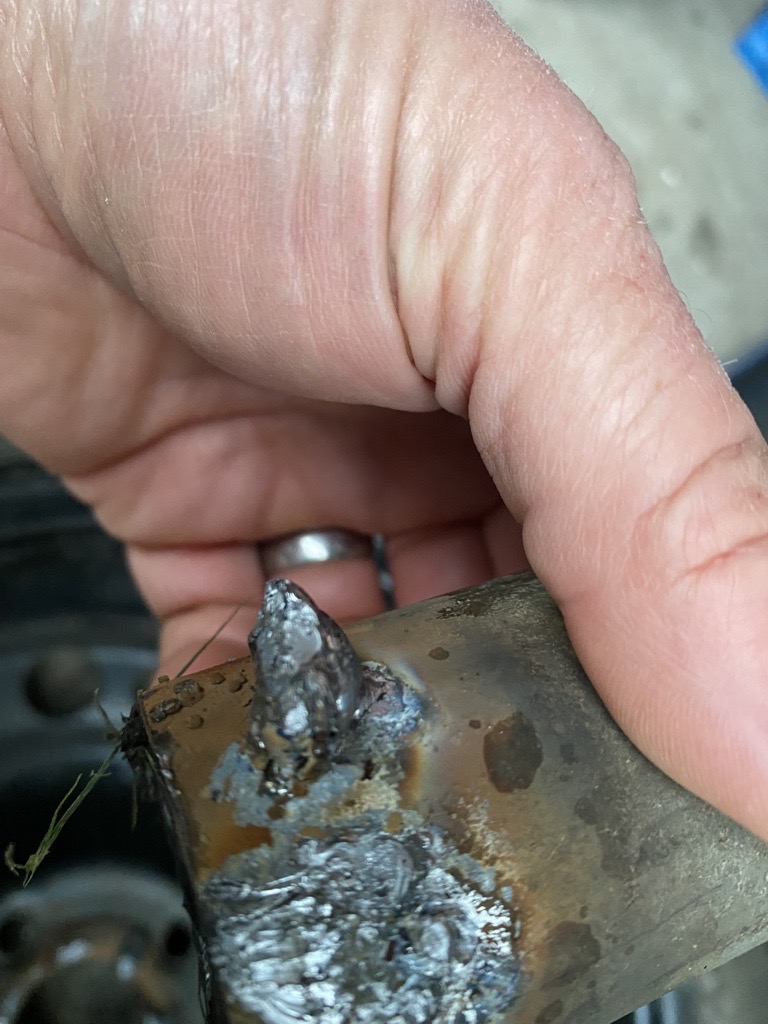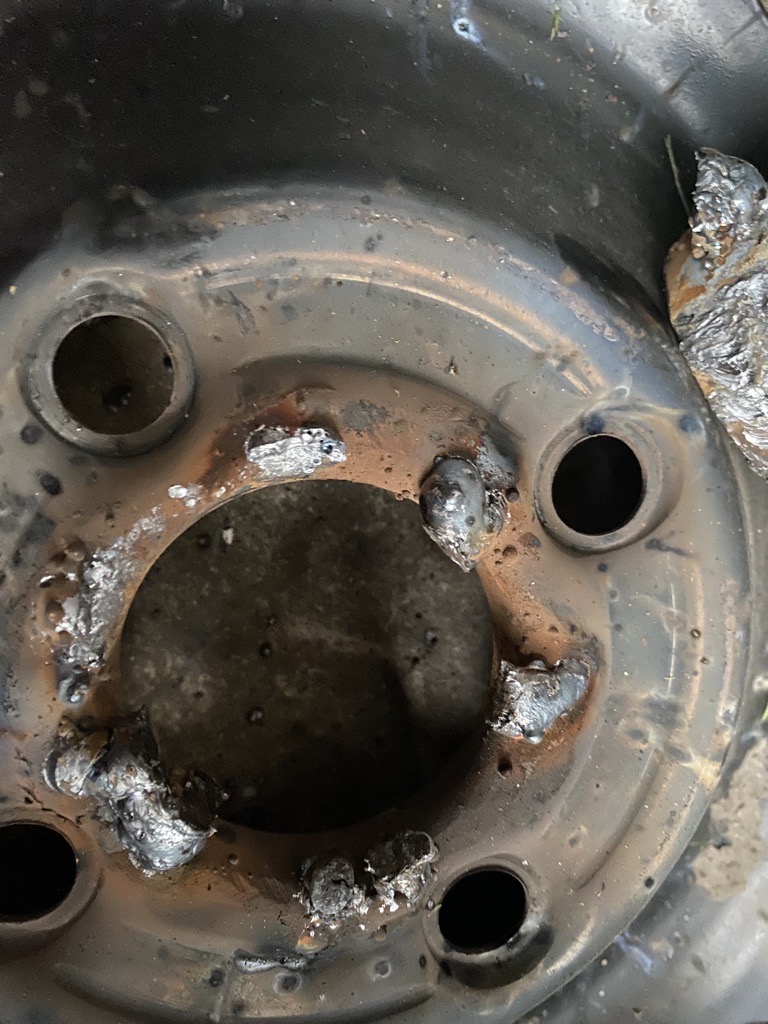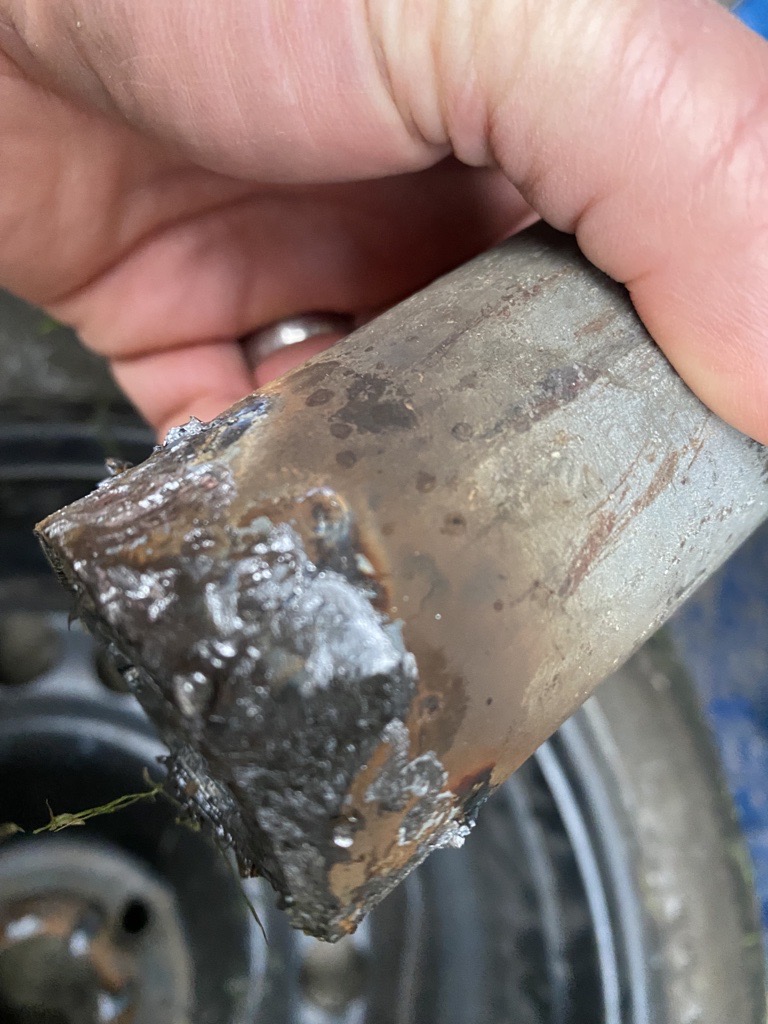Just welded a make shift axle onto some steels to move a hut.
Near disaster last night when 2 wheels came off.
Can I get a view on the issue here ? I had MIG on 3 High which is as high as it goes but it looks like it hasnt penetrated the axle which is just some cut off scaffolding tube. On another weld mind it looks broken.
Maybe I just didn't weld enough, or perhaps it wasn't quite straight....Will have to clean up and re-do as the hut is now on its backside on the flagstones (which it has cracked) right before Jubilee weekend when my good lady has invited folk around...
More of the same in true CLarkson style ?



Near disaster last night when 2 wheels came off.
Can I get a view on the issue here ? I had MIG on 3 High which is as high as it goes but it looks like it hasnt penetrated the axle which is just some cut off scaffolding tube. On another weld mind it looks broken.
Maybe I just didn't weld enough, or perhaps it wasn't quite straight....Will have to clean up and re-do as the hut is now on its backside on the flagstones (which it has cracked) right before Jubilee weekend when my good lady has invited folk around...
More of the same in true CLarkson style ?



